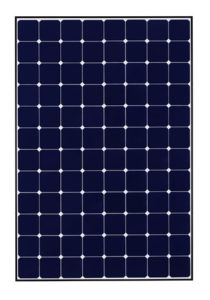How Solar Works
A solar energy system captures the sun’s energy and converts it into electricity that can power a home, car, or business.
The sun constantly releases tiny packets of energy called photons. So many photons reach earth every hour that – if there were some way to harness them all – they could meet the world’s energy needs.
A home or business solar array grabs just a few of those photons using photovoltaic (PV) solar panels. An array can be installed on a roof, in a yard, or anywhere there’s unobstructed sunlight. More panels mean more energy can be generated.
 Every array is made up of several solar panels, and every solar panel is made up of several solar cells. Those cells do the daily work of converting the sun’s photons into electricity.
Every array is made up of several solar panels, and every solar panel is made up of several solar cells. Those cells do the daily work of converting the sun’s photons into electricity.
Solar cells are made of silicon. Every time photons hit the silicon, they transfer energy to loose silicon electrons. Those loose electrons are then channeled into an electric current.
At this point, there’s a problem. PV solar panels generate direct current, or DC, electricity. DC is great for powering small devices. In fact, flashlights and other battery-powered devices use DC. But DC is expensive to transmit over long distances. That why homes and power grids use alternating current or AC.
The question is, how do you make a solar panel’s DC electricity usable for the AC plugs and appliances in the house? The answer is an inverter. Most solar powered homes have what’s called a “central inverter.” That means the wires from all the solar panels on a roof run into a big box installed in the garage or on the side of a house. The device in that box makes the conversion from DC to AC.
But SunPower solar systems like the SunPower Equinox home solar system now rely on “microinverters.” A microinverter converts the power from DC to AC at the panel level, a process that is much more efficient.
Whether it’s a central inverter or microinverter, the electricity changes to AC electricity to power the home. For solar powered buildings that can use net metering, the inverter also allows the energy to be fed into the electrical grid. That can save a homeowner thousands of dollars over the life of their PV solar system.
